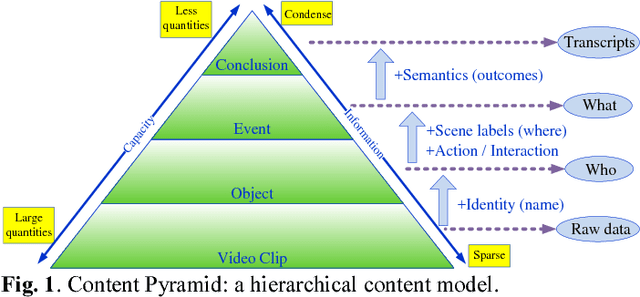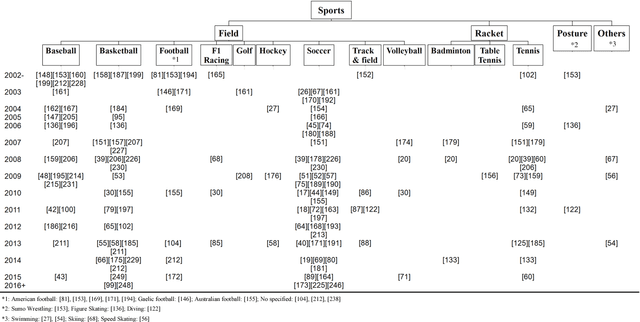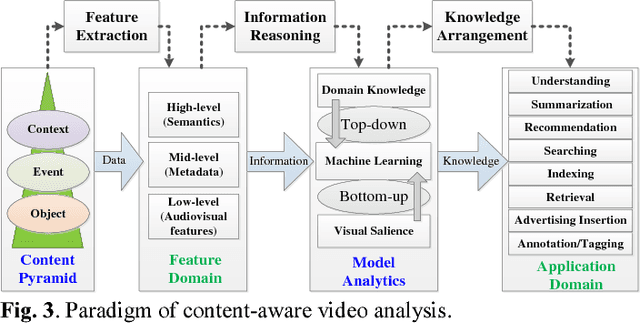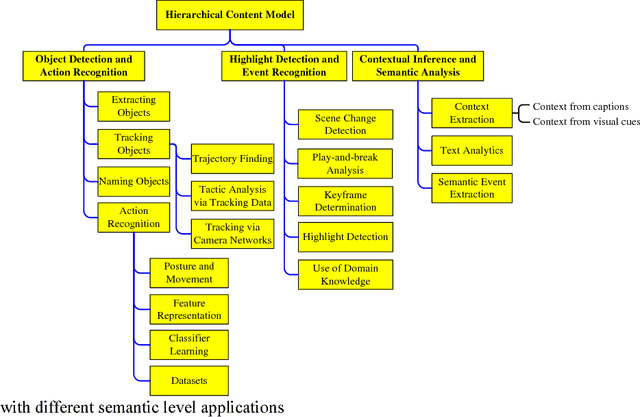Huang-Chia Shih
Generalized Jersey Number Recognition Using Multi-task Learning With Orientation-guided Weight Refinement
Jun 03, 2024



Abstract:Jersey number recognition (JNR) has always been an important task in sports analytics. Improving recognition accuracy remains an ongoing challenge because images are subject to blurring, occlusion, deformity, and low resolution. Recent research has addressed these problems using number localization and optical character recognition. Some approaches apply player identification schemes to image sequences, ignoring the impact of human body rotation angles on jersey digit identification. Accurately predicting the number of jersey digits by using a multi-task scheme to recognize each individual digit enables more robust results. Based on the above considerations, this paper proposes a multi-task learning method called the angle-digit refine scheme (ADRS), which combines human body orientation angles and digit number clues to recognize athletic jersey numbers. Based on our experimental results, our approach increases inference information, significantly improving prediction accuracy. Compared to state-of-the-art methods, which can only handle a single type of sport, the proposed method produces a more diverse and practical JNR application. The incorporation of diverse types of team sports such as soccer, football, basketball, volleyball, and baseball into our dataset contributes greatly to generalized JNR in sports analytics. Our accuracy achieves 64.07% on Top-1 and 89.97% on Top-2, with corresponding F1 scores of 67.46% and 90.64%, respectively.
A Survey on Content-Aware Video Analysis for Sports
Mar 03, 2017



Abstract:Sports data analysis is becoming increasingly large-scale, diversified, and shared, but difficulty persists in rapidly accessing the most crucial information. Previous surveys have focused on the methodologies of sports video analysis from the spatiotemporal viewpoint instead of a content-based viewpoint, and few of these studies have considered semantics. This study develops a deeper interpretation of content-aware sports video analysis by examining the insight offered by research into the structure of content under different scenarios. On the basis of this insight, we provide an overview of the themes particularly relevant to the research on content-aware systems for broadcast sports. Specifically, we focus on the video content analysis techniques applied in sportscasts over the past decade from the perspectives of fundamentals and general review, a content hierarchical model, and trends and challenges. Content-aware analysis methods are discussed with respect to object-, event-, and context-oriented groups. In each group, the gap between sensation and content excitement must be bridged using proper strategies. In this regard, a content-aware approach is required to determine user demands. Finally, the paper summarizes the future trends and challenges for sports video analysis. We believe that our findings can advance the field of research on content-aware video analysis for broadcast sports.
 Add to Chrome
Add to Chrome Add to Firefox
Add to Firefox Add to Edge
Add to Edge